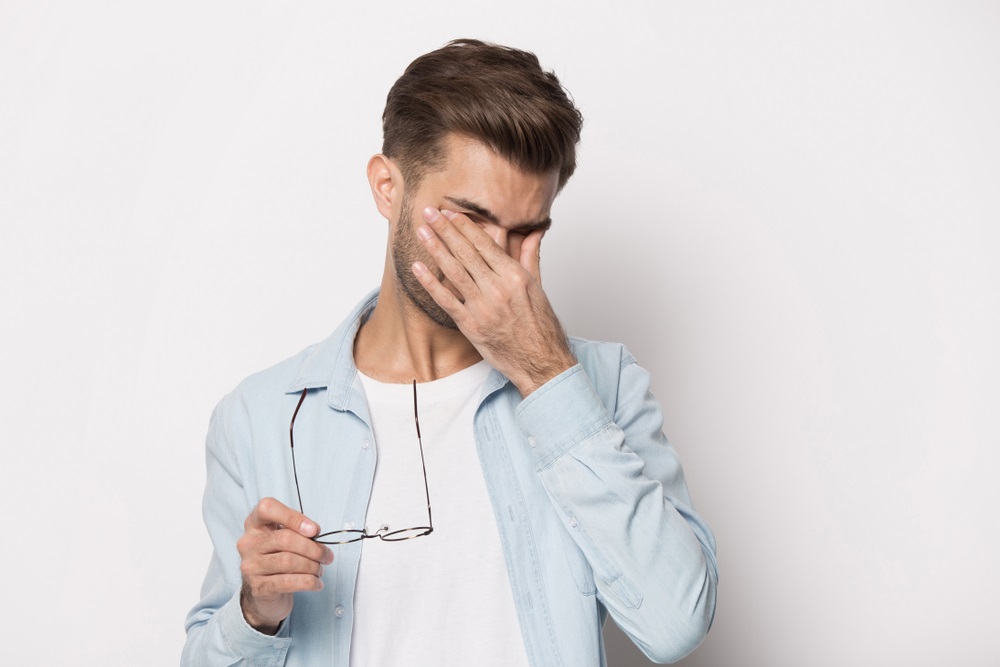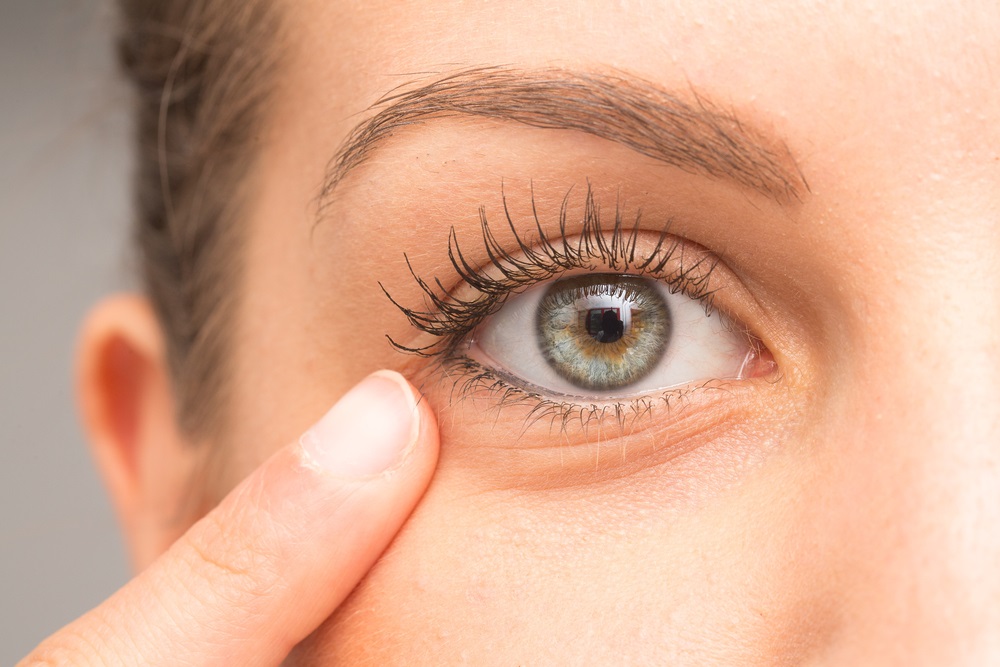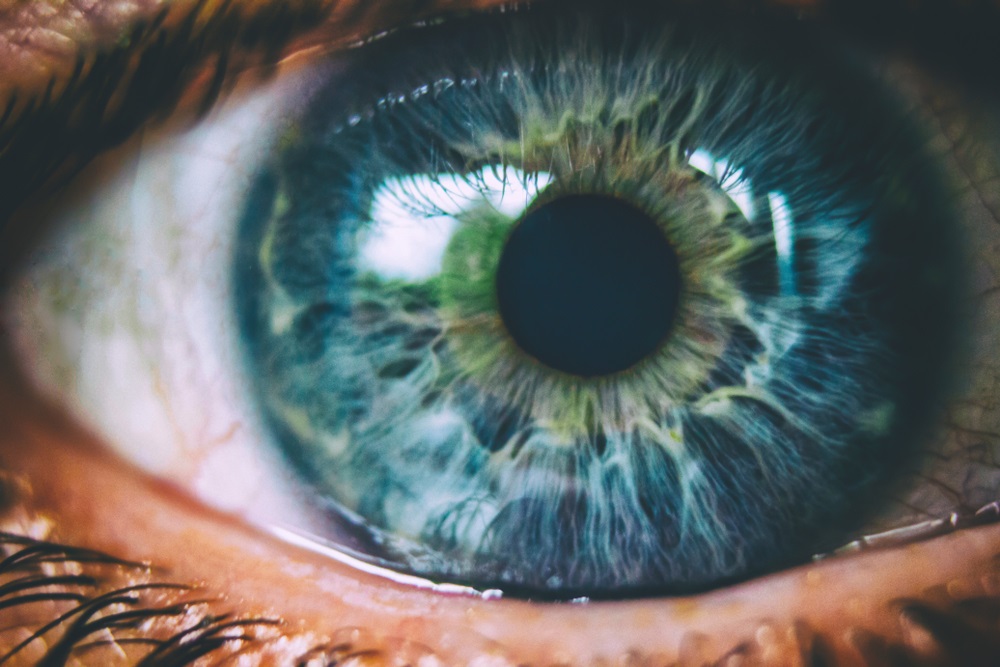
Dry eye disease affects millions of people each year and is one of the most common reasons patients visit their eye doctor. Patients can experience dry eyes for many reasons. These reasons may include increased tear evaporation, poor tear production, blocked tear ducts, allergies, side effects from medication, and aging.

Dry eye disease is an eye condition that affects both the tear glands and the tear ducts. Symptoms vary and can range from mild irritation and redness to burning or stinging in the eyes.
Dry eyes are uncomfortable and may cause irritation due to a lack of moisture and inflammation. You may be suffering from dry eye disease if you are experiencing stinging or burning in your eyes, excess tearing, the feeling that something is “stuck” in your eye, blurred vision, eye discharge, or heavy eyelids.
When you blink, a protective coating of tears spreads over the surface of your eyes. This tear layer protects and lubricates the eye surface, rinses away any foreign matter in your eyes, and keeps your eyes smooth and clear.
Your tears are composed of three separate layers: an oil layer (lipid), a water layer (aqueous), and a mucin layer (mucous). These layers work together to provide your tear film. If any of these layers is missing, your tears cannot function to soothe your eyes, which can lead to dry eye disease.
Left untreated, dry eye disease can greatly interfere with your enjoyment of your daily activities and even cause long-term cornea complications.
At Advanced Eye Care, our experienced optometrists and ophthalmologists can diagnose patients who are experiencing dry eye disease, as well as the underlying cause. Once diagnosed, your doctor will offer an individualized treatment plan to provide relief.
As each person is unique, so can be the approach to treating their dry eye. Fortunately, there are a variety of treatments available for dry eye disease. For patients with mild symptoms, over-the-counter medications like artificial tears, gels, or ointments may help. Adding omega fatty acid supplements can also help dry eyes produce more oils to lubricate the corneas.

Making small lifestyle changes can similarly alleviate mild dry eye symptoms. These changes may include reducing how much time you spend in front of screens, changing medications, wearing wraparound sunglasses, or taking regular breaks while working.
However, for many with dry eye disease, these simple treatments may not be enough. The good news is more advanced treatments are available, and the experienced dry eye specialists at Advanced Eye Care are available to help.
Your treatment will begin with a comprehensive eye exam to identify the cause of your dry eyes. Advanced Eye Care offers the latest technology in testing analysis with on-site point-of-care laboratory testing and the Oculus 5M. With a simple collection of tears from your eyelid, we can identify during your appointment the severity of your dry eye and whether your dry eye is caused by inflammation in the cornea. Using the Oculus 5M allows our doctors to simultaneously analyze your blink, your lipid tear layer, your tear break-up time, and your tear oil glands (called meibomian glands).
Combining the results of your exam and testing allows the doctors at Advanced Eye Care to evaluate your dry eye, the cause of your dry eye, and help create custom and effective treatment plans to treat your dry eye. It is recommended that patients of Advanced Eye Care receiving a dry eye evaluation or in-office treatment do not wear eye makeup or contact lenses to their appointment.
One of the most common causes for dry eye disease is blepharitis. This is an inflammatory condition of the eyelids that occurs when too much bacteria grows at the edge of the eyelids and at the base of the eyelashes.
Common symptoms of blepharitis include red, irritated, flaky or crusted eyelids, and swollen, itchy eyes. Rubbing and touching your eyes can make the irritation worse and may lead to secondary infections.
Blepharitis affects people of all ages. Often, people with rosacea also have blepharitis. Although it can be uncomfortable, it is usually not contagious. Anyone can develop blepharitis because your tears contain few antibodies to fight bacteria.
For some people, blepharitis may lead to blurred vision, corneal infections, inflammation, and eyelash problems.
If you are concerned you may have blepharitis, it is important to make an appointment to receive a diagnosis and effective treatment. It is recommended that patients of Advanced Eye Care receiving a dry eye evaluation or in-office treatment do not wear eye makeup or contact lenses to their appointment.
 While you wouldn’t think it by the name alone, excessive tearing is a symptom of dry eye disease! It is a condition in which tears spill out of your eyes even though you are not crying, and can also be called watering eye or epiphora.
While you wouldn’t think it by the name alone, excessive tearing is a symptom of dry eye disease! It is a condition in which tears spill out of your eyes even though you are not crying, and can also be called watering eye or epiphora.
The main cause of watering eyes is the production of too many tears or a blockage in the tear drainage system.
Your eyes may be producing too many tears because of an eye irritation. You may have an infection along the edge of your eyelids, such as blepharitis, you may have a foreign body feeling due to poor quality tears, or you may be suffering from allergy or dry eyes.
Alternatively, you may have a blockage in your tear drainage system. This can happen following an eye injury or repeat sinus infections, age, or as a side affect to other medications or treatments (such as those used for chemotherapy).
During your complete eye exam, your doctor will ask about your eye history and examine your eyes, including your eyelids. If tearing appears to be a response to allergens, your doctor may prescribe an eye drop, allergy lid wipes, and environmental changes. If tearing is in response to an infection, your doctor may prescribe medications, lid wipes, and a BlephEx treatment. If tearing is in response to a blocked drainage duct, a heat mask, medications, or a minor in-office procedure may release the blockage. If tearing is in response to dry eye disease, multiple personalized treatments are available to treat the cause of your dry eye disease and reduce the reflex of excessive tear production.
 One treatment for blepharitis is BlephEx. BlephEx is an innovative, pain-free in-office treatment to remove eyelid debris and the bacteria from the eyelid.
One treatment for blepharitis is BlephEx. BlephEx is an innovative, pain-free in-office treatment to remove eyelid debris and the bacteria from the eyelid.
During this treatment, your provider thoroughly cleans your eyelid margins and eyelids using a special device to gently exfoliate these sensitive areas with a medical grade micro-sponge. This removes excess bacteria and any biofilm that has accumulated, which cannot be achieved through at-home or typical eyelid cleanings. It takes only a few minutes to perform and keeps your eyes clean and symptom-free with regular treatments.
BlephEx is not only safe and effective, but it can help reduce the risk of long-term eye irritation and inflammation that can lead to infection. Most patients receive BlephEx treatments every 4 to 6 months.
Without treatment for blepharitis, you may experience debris, bacterial build-up in your eye, and dry eye. This could lead to eventual damage of the eyelids, eye’s surface, and tear glands.
Another cause of dry eye disease is meibomian gland dysfunction (MGD). TearCare is a state-of-the-art blink-assisted device that applies heat to the eyelids to remove blockage caused by MGD.
Meibomian glands are in your upper and lower eyelids and are responsible for providing the oil layer of your tears. Sufficient oil in your tears keeps tears from evaporating too quickly. Meibomian gland dysfunction occurs when there is a blockage within the glands. As a result, the glands do not secrete enough oil into the tears of the eye, allowing the tear film on the surface of the eye to evaporate too quickly.
At-home treatments for MGD included applying a heat mask to the eyelids and gently massaging the eyelids. Unfortunately, these simple treatments may not do enough to restore normal function of the meibomian glands.
Advanced Eye Care offers the latest technology to treat MGD, the TearCare system. TearCare uses smart technology to provide a comfortable open-eye treatment, using a person’s natural blinking to help restore the meibomian gland function.
During the treatment, flexible and lightweight pads are placed on the eyelids over the meibomian glands. The pads gently but effectively warm the eyelids. Patients are encouraged to blink as they read or relax during the five-minute treatment. The thermal heat therapy, coupled with the patient’s own blinking, helps release blocked meibomian glands to restore natural oil production to the patient’s tears. As a last step, your eye doctor may manually express the glands to ensure all obstructions have been removed.
Because the treatment allows the eyes to remain open, patients find TearCare to be a comfortable procedure that provides immediate relief. TearCare, coupled with BlephEx, is an especially effective treatment option for dry eye disease caused by meibomian gland dysfunction.
 Advanced Eye Care is lucky to have Dr. Don LoConte as a member of our staff, as he is the #1 Certified TearCare provider in Illinois, as confirmed by TearCare. Dr. LoConte has been published in the Journal of Glaucoma and brings a thorough medical background to Advanced Eye Care, SC.
Advanced Eye Care is lucky to have Dr. Don LoConte as a member of our staff, as he is the #1 Certified TearCare provider in Illinois, as confirmed by TearCare. Dr. LoConte has been published in the Journal of Glaucoma and brings a thorough medical background to Advanced Eye Care, SC.
Dr. LoConte has also received additional specialty training from Dry Eye University and Dry Eye Institute and is one of Illinois’ most preeminent Dry Eye Specialists.
Advanced Eye Care is committed to providing you with comprehensive solutions for all your eye care needs. Schedule an appointment with us in New Lenox, IL to discuss how we can help!